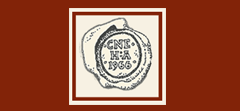Abstract
In his book In Small Things Forgotten, James Deetz (1977) challenged archaeologists to use material culture as a source of information about human actions that may not be represented widely in the written record. Consequently, studies of ethnic minority groups became popular in American historical archaeology from the 1970s onwards. Equally invisible, however, are immigrant groups who wish to blend in with-or whose character resembles that of-the charter group in a given region. This article presents a model that seeks to distinguish German and English ethnic identity through an analysis of ceramic vessels from five domestic sites occupied by some of the first immigrants to settle in Markham, Upper Canada (Ontario), ca. 1794 to the 1830s. In particular, differences and similarities observed in the ceramic vessel assemblages are interpreted within the contexts of the goods available in the embryonic settlement and the ethnic foodways of the sites' occupants.
DOI
10.22191/neha/vol33/iss1/5
Recommended Citation
MacDonald, Eva M.
(2004)
"Towards a Historical Archaeology of the German-Canadiansof Markham's Berczy Settlement,"
Northeast Historical Archaeology:
Vol.
33
33, Article 5.
https://doi.org/10.22191/neha/vol33/iss1/5
Available at:
https://orb.binghamton.edu/neha/vol33/iss1/5


